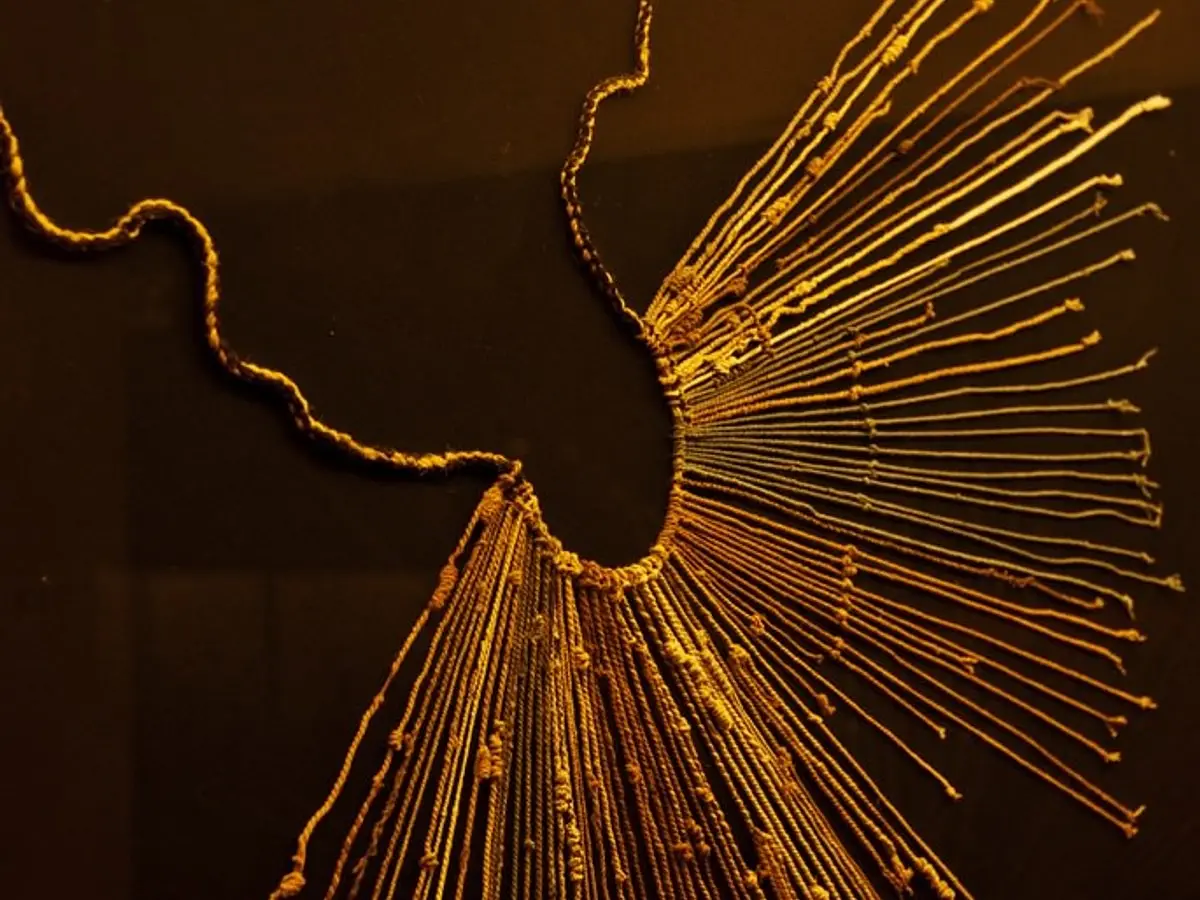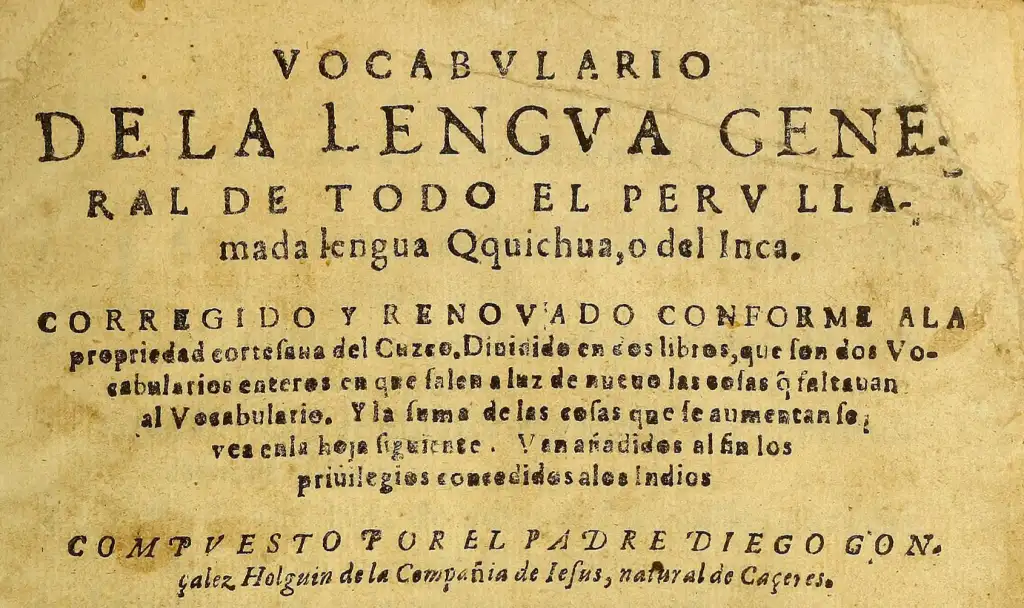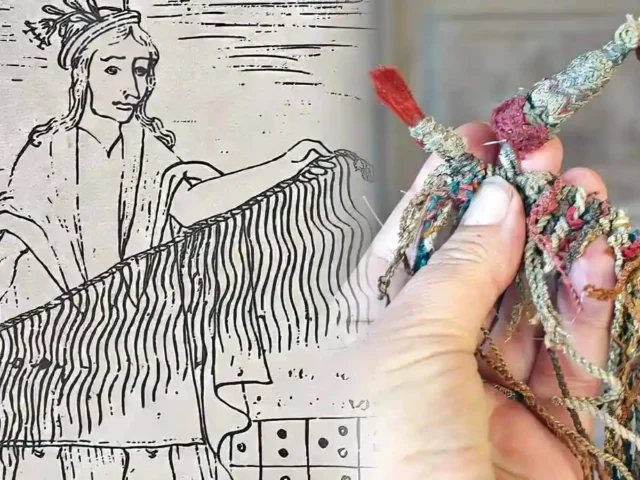Ñuqanchik, wiraqocha! (Hello, traveler!) Let me tell you that learning about the Inca language and writing is not impossible. Although the Incas did not use an alphabetic writing system like the one we know today, their way of communicating and recording information was equally sophisticated and fascinating. From Quechua, the language that unified a vast empire, to the enigmatic quipus, the Incas left behind a legacy that remains a mystery, and this is what I want to show you today. Are you ready to explore this fascinating ancient world? Let’s do it together!
About the Inca language and writing
The language and writing system of the Incas were remarkable in their ability to organize a vast empire without using a traditional alphabet. The main language, Quechua, unified the different communities throughout the Andes, facilitating communication and trade. Although the Incas did not have a writing system as we know it today, they created the quipu, an innovative method based on knotted strings that was used to record numerical data, control inventories, and possibly to store historical accounts and events.
This system was managed by the quipucamayocs, experts who played a fundamental role in the administration of the empire. In addition, the network of messengers, the chasquis, ensured that information reached every corner of the empire quickly. Thus, the Incas managed to keep their empire organized, communicate over long distances, and preserve their traditions without the need for alphabetic writing.
The Inca Language: Quechua
Quechua is a language spoken by millions of people today, stretching from southern Colombia to northern Chile, passing through countries such as Peru, Bolivia, Ecuador, and Argentina. Its adoption as the official language by the Incas was not only an administrative measure, but also an act of unification of peoples who, although diverse in culture and language, found in Quechua a tool for trade, politics, and everyday communication.
The history
During the Tahuantinsuyo period, the Inca Empire promoted Quechua under the name runa simi, which literally means “language of the people.” Although Quechua did not eliminate the native languages of the different peoples, it was adopted as the main language of the entire empire to facilitate centralized administration. In this way, the Incas were able to manage their territory more effectively, allowing people from different regions to understand each other regardless of their native language.
The Inca alphabet and writing system
The Incas did not have an alphabetic writing system as we know it today. Instead, they developed the quipu, a system of knotted strings used to record numbers, administrative data, and possibly even oral histories. This system allowed the Incas to record information without the need for traditional writing, making it a unique and effective method of “writing” for its time.
| Topic | Details |
|---|---|
| Quechua Language | Spoken by millions across the Andes. It was the official language of the Inca Empire and is still widely spoken in countries like Peru, Bolivia, and Ecuador. |
| Quechua Alphabet | The alphabet has 27 letters, including vowels and consonants. It uses simple phonetic sounds, which makes pronunciation straightforward. |
| Vowels | A, E, I, O, U – Pronounced similarly to Spanish vowels. No silent vowels. |
| Consonants | Includes K, Q, P, T, M, N, and S, plus others like Ñ (ny sound). The letters are familiar to Spanish speakers. |
| Reading Quechua | The language is read phonetically. Each letter has a consistent sound, making reading intuitive once you know the sounds of each letter. |
| Accents and Diacritics | Accents indicate stress on specific syllables in some variants of Quechua, helping to differentiate between similar words. |
| Syllables | Quechua words are broken into simple, clear syllables. Each syllable is pronounced distinctly. |
| Examples | – Ñawi (eye) – The Ñ sounds like “ny”. – Wasi (house) – The W is pronounced like in English, and A sounds like “father”. |
You may be interested: Peru in the summer: 6 best places to visit

The Quipu
The quipu was a set of cotton strings or camelid fibers that were knotted in various ways to represent different types of data. Each knot and the color of the string indicated numbers and concepts. The quipucamayocs were responsible for creating, reading, and managing the quipus, playing a fundamental role in the management of the empire. Although it was initially thought that quipus only recorded numerical information, recent research suggests that they may also have been used to store oral accounts and other types of non-numerical information.
Uses of the Quipu
1. Administrative records
The quipu was used to keep track of important numerical information such as population numbers, tributes, and inventories. It helped the quipucamayocs (officials) manage the empire’s needs, like how much tribute each region had to pay, the number of inhabitants, and the resources stored across the empire. This system was incredibly effective for governing such a large and diverse empire.
2. Resource management
The quipus also helped the Incas monitor agricultural production, especially key crops like corn, potatoes, and camels. The quipus recorded the available resources in each region, ensuring there were no shortages and that the empire ran smoothly.
3. Military management
In the military, quipus were used to track troop numbers and resources needed for expeditions. They likely also recorded details of military campaigns and victories and helped with coordinating strategies throughout the empire.
4. Historical and cultural narratives
While most quipus served administrative functions, some may have been used to preserve oral histories, genealogies, and myths. Quipucamayocs would have used them to pass on important cultural stories, turning the quipu into a unique method of recording both practical and cultural information.
5. Messaging system
In addition to being a record-keeping tool, the quipu also worked as a messaging system. Chasquis, the trained messengers, carried them across the Qhapaq Ñan to communicate between regions, allowing quick and accurate transfer of data.
You may be interested: Complete packing list for Peru 2026

How did the Quipu writing system work?
The quipu was made up of cotton or camelid fibers, such as alpaca, that were tied into knots at different heights and positions. The cords, which could be of various colors and lengths, formed a coding system that represented specific data.
Cords and knots
The cords were the main component of the quipu. Long and short cords represented different categories of data. The knots tied to the cords represented numbers. Each type of knot, such as simple, double, or twisted, represented specific values within a decimal system. For example, a simple knot could represent the number 1, while a more complex knot could represent 10 or 100, depending on its position on the cord.
Cord colors
The colors of the cords were not just decorative; they also had specific meanings. Different colors indicated different types of information. For example, a red cord could be associated with tributes or agricultural products, while a white cord might be related to population or people.
Position and length of the cords
The length of the cords also served a purpose. Longer cords represented larger quantities, while shorter cords were used for smaller amounts. The position of the knots on the cords also influenced the value they represented, adding another layer of complexity to the system.
How was a Quipu read?
In the Inca Empire, reading a quipu was a job for the quipucamayocs, specially trained experts who could “read” the knots and strings. It wasn’t just about numbers; it also took a deep understanding of culture and meaning. These skilled readers interpreted the knots, the placement, and even the colors of the cords to keep track of everything from population to resources. Their role was key to helping the empire stay organized and running smoothly.
The mystery of the Quipu
Even with years of research, the quipu still holds many secrets. Historians have figured out how the Incas used it to record numbers, but some believe it may have been used for much more — possibly even to tell stories or share symbolic messages. The idea that these colorful cords might hold the memory of Inca history, traditions, and oral stories is still being explored. Bit by bit, researchers are uncovering new clues about this incredible system.
You may be interested: Best tourist attractions in Peru

The transmission of Inca knowledge
In such a vast empire, the transmission of knowledge and messages was fundamental to its functioning. The chasquis, highly trained messengers, were responsible for carrying messages and quipus along the roads of the Qhapaq Ñan, the network of roads that connected the entire empire. These messengers ran long distances, carrying important information quickly and efficiently, similar to a postal service, but without the use of letters.
The role of the chasquis
The chasquis were selected from among the strongest and fastest young men in the empire, trained to run long distances at high altitudes, often on difficult terrain. Their task was not only to run, but also to carry the quipu (a system of knotted strings used to record data) or verbal messages to other parts of the empire. The quipu they carried contained crucial information such as censuses, taxes, and administrative details, while verbal messages were used to communicate important events or decisions made by the central government.
The messaging system: How did it work?
The messaging system worked efficiently and systematically. The chasquis received messages at relay stations called “tambos,” rest stops along the Qhapaq Ñan. These tambos were places where the chasquis could rest, refuel, and continue their journey. Each chasqui ran a specific section, which varied between 5 and 10 kilometers. Upon arriving at the next tambo, the message or quipu was transferred to the next chasqui, who continued the journey.

Inca language and writing legacy
The Inca language and writing system have left a lasting mark on the culture of the Andes. Even centuries after the fall of the Inca Empire, the Quechua language continues to thrive, and the quipu remains an important symbol of Incan ingenuity and a source of ongoing curiosity.
Both Quechua and the quipu represent resilience, showing how the Inca civilization, without a written alphabet, developed systems that have stood the test of time. Today, they play a key role in preserving culture while linking the ancient world to modern society, keeping the history of the Andean peoples alive.
In short, the legacy of the Inca language and writing endures in modern Andean culture, through language education and artistic expressions. These ancient communication methods are still relevant, proving that the Inca influence remains a vital part of the identity and heritage of the Andean people.


